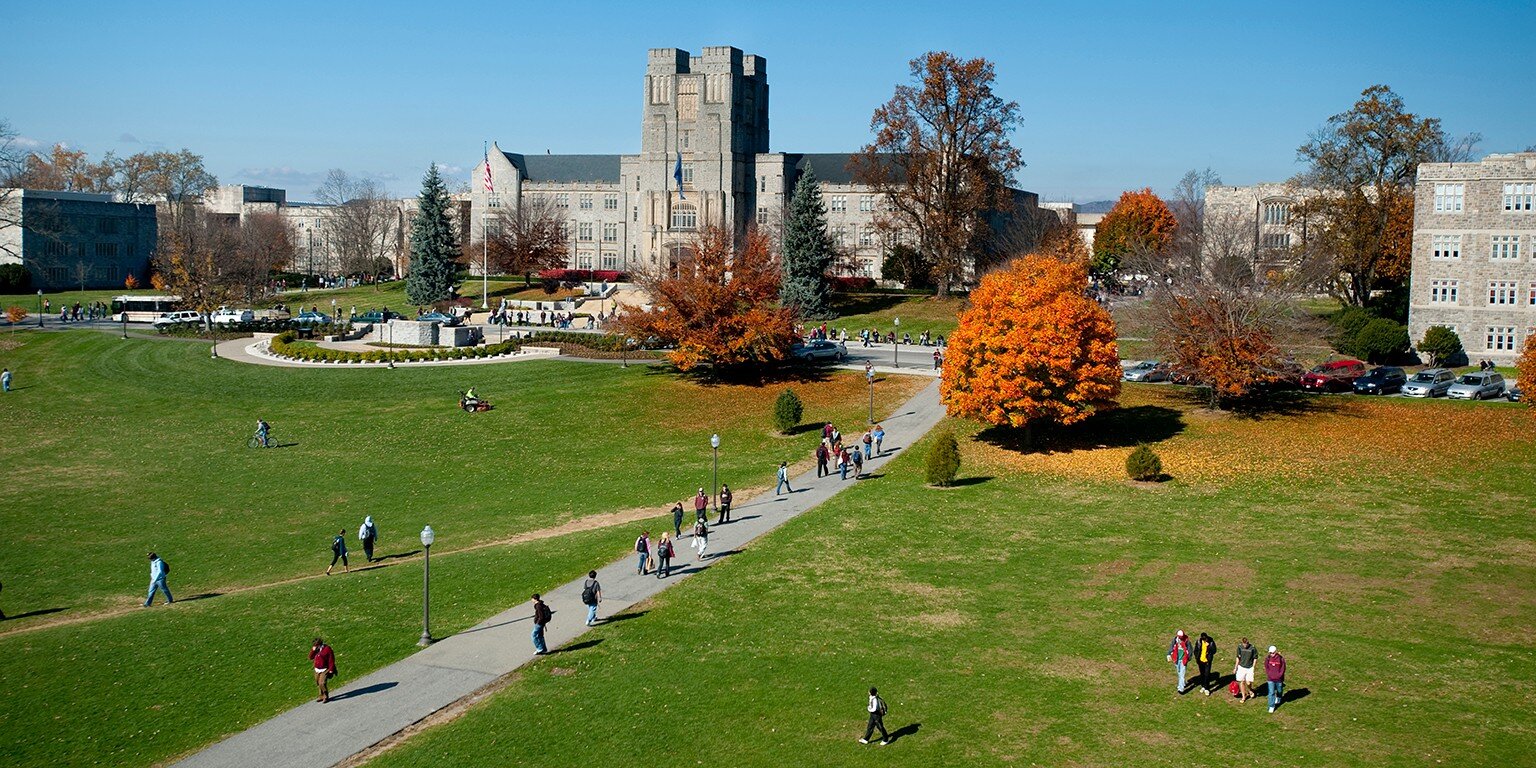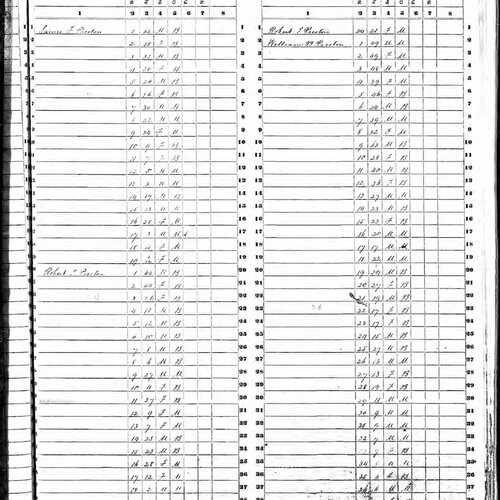EXHIBIT
SOLITUDE
THE HEART OF VIRGINIA TECH
In this exhibit you can explore the different phases of Solitude’s history. We begin during the period when this place was indigenous land, and go on to explore its history as a slave plantation in the nineteenth century.
While slavery in southwest Virginia was not as prominent nor as profitable as the large tobacco plantations in Virginia’s Tidewater region, the region was still home to thousands of enslaved peoples. In Blacksburg and the surrounding area, one of the more prominent slave holding families was the Prestons, owners of Smithfield Plantation since the 1770s. Robert Taylor Preston
Inherited Solitude and the surrounding land in 1833. At the time he owned no slaves.
However, within a few short years, Solitude would transform itself into one of the more successful plantations in the region.
Many slaves came to call Solitude home after Robert Preston inherited several from his father, who died in the Spring of 1843. To accomodate for the roughly 20 people enslaved at Solitude, an additional building was erected to house several slave families. Pictured on the side (Figure 1), this two story dwelling was home to numerous families including the Fractions, the largest and most influential slave family at Solitude and for whom the building is now named. The number of enslaved people at Solitude continued to grow throughout the decade and by 1850, Robert Taylor Preston was the owner of 24 enslaved peoples. Figure 2 pictures a section from the 1850 United States Census Slave Schedule including Robert Taylor Preston. As slaves were considered property rather than people during the time, their names were not included on such records. The only information taken about slaves was their age, sex, and color (black or mulatto). The exclusions of names from the required information stripped enslaved peoples of their identity and exemplifies the popular belief of the time that slaves were not property, not people.
Figure 1 - Fraction Family Home prior to restoration. Figure 2 - 1850 US Slave Schedule featuring Robert Taylor Preston and his 24 slaves. National Archives. Figure 3- 1860 US Federal Agricultrual Census featuring Robert Taylor Preston. National Archives. By 1860, Solitude was home to 33 slaves, who continued to work the 218 acres of Robert Preston’s estate and expand upon the Solitude’s structure. The importance of slaves to the infrastructure and economy of Southern society is shown by the 1860 United States Agricultural Census (Figure 3). These censuses recorded the acreage of farms, value of livestock and crops, as well as the number of enslaved peoples each farm owner owned. Agriculture was the backbone of the Southern economy throughout the 19th century, meaning that the entire livelihood of the South rested on the backs of slaves. Regardless of their importance however, slaves were seen as no more than property, their lives and identities tracked alongside cattle.
Of course, enslaved peoples were more than property; they were people with their own unique beliefs and experiences. Slavery was their condition, not their full identity. However, while enslaved peoples were able to forge their own lives and communities, it wasn't until the passage of the 13th Amendment in 1865 that enslaved peoples would be legally “persons” in the eyes of the law. This transition from property to person was different for everyone who experienced it and many sought to take advantage of their newfound freedom to forge their own unique identities and begin a new chapter in their and their families’ lives.
THIS IS HOME: WHOSE HOME? THE FRACTION BROTHERS FIGHT FOR FREEDOM RACE AT SOLITUDE AFTER THE CIVIL WAR BIRTHPLACE OF VIRGINIA TECH RESTORING A HISTORIC LANDMARK





